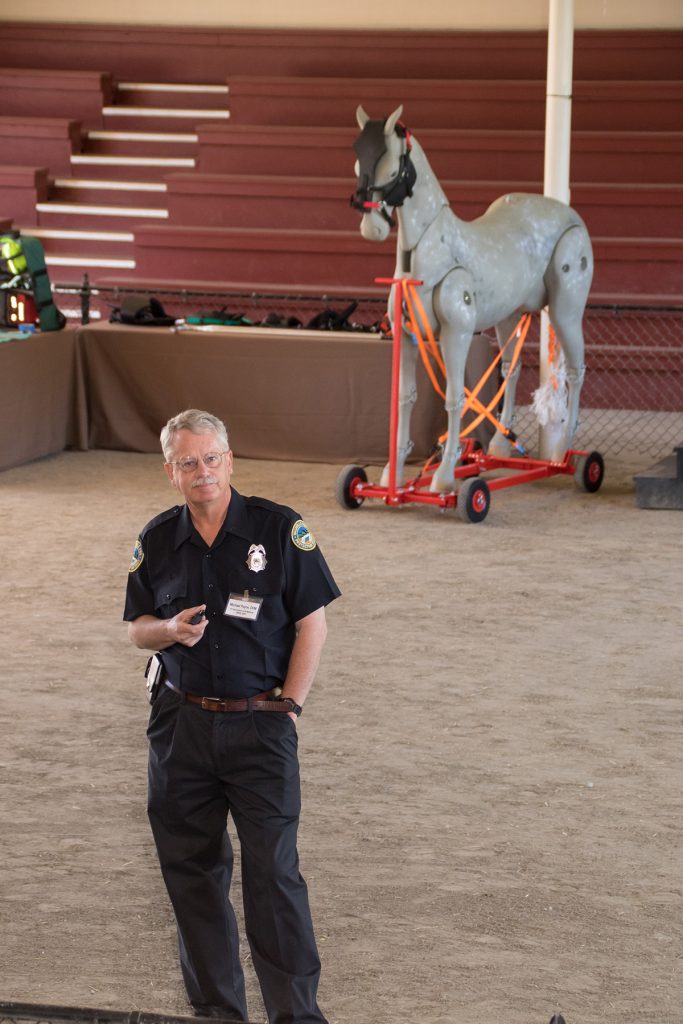Helping Livestock Owners Prepare for Wildfires
By Chris Brunner, May 5, 2017

Firefighter and UCD veterinarian Dr. Michael Payne explains what happens behind-the-scenes during a wildfire threatening ranch properties.
Dr. Michael Payne, UCD veterinarian and volunteer firefighter with the Vacaville Fire Protection District, was lead speaker at Sonoma County’s Ranch Readiness Day. His presentation “Saving the Ranch: Behind the Fire-line in Real Time” used pictures, animations and videos to explain fire service response procedures and the specific actions that livestock owners can take to help protect themselves, their ranch and their animals before and during a wildfire.
The event held April 30 at the Sonoma County Fairgrounds was attended by livestock and horse owners, firefighters, sheriff officers, veterinarians, search and rescue teams and shelter managers. Ranch Readiness Day is an annual event sponsored by the non-profit Horse Livestock Team Emergency Response (HALTER) group, an organization committed to helping families, farmers and ranchers partner with first responders to prepare for emergencies of all kinds.
Through personal experience responding to rural fires, Dr. Payne advises, “The survival of your ranch and animals from a natural disaster, such as a wildfire, can be enormously increased by being prepared.”
It’s never too late to develop an emergency and evacuation plan, and he encourages, “Getting started can be as simple as requesting a walk-through with your local fire service and developing an evacuation plan.”
Disasters, whether manmade or natural, are happening all the time. Amid the chaos of response and evacuation, every second counts. WIFSS disaster preparedness materials prepare first responders and community members to prevent and recover from a disaster. Our awareness level courses provide tools to protect, respond to, and recover from the consequences of disasters such as fire, flood, heat, earthquake, tornadoes, hurricanes, hazardous materials and catastrophic disease exposure involving animals in rural communities.
